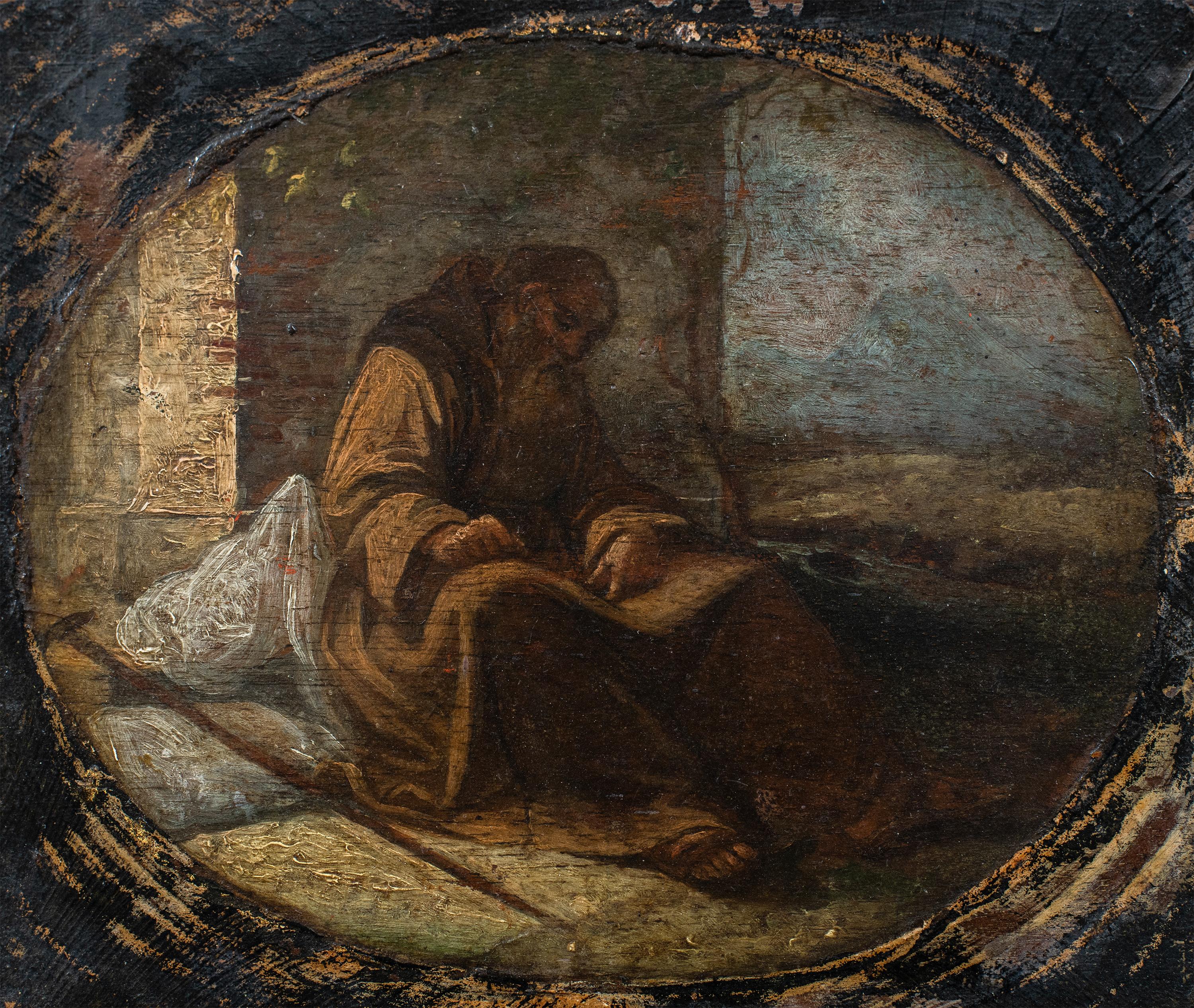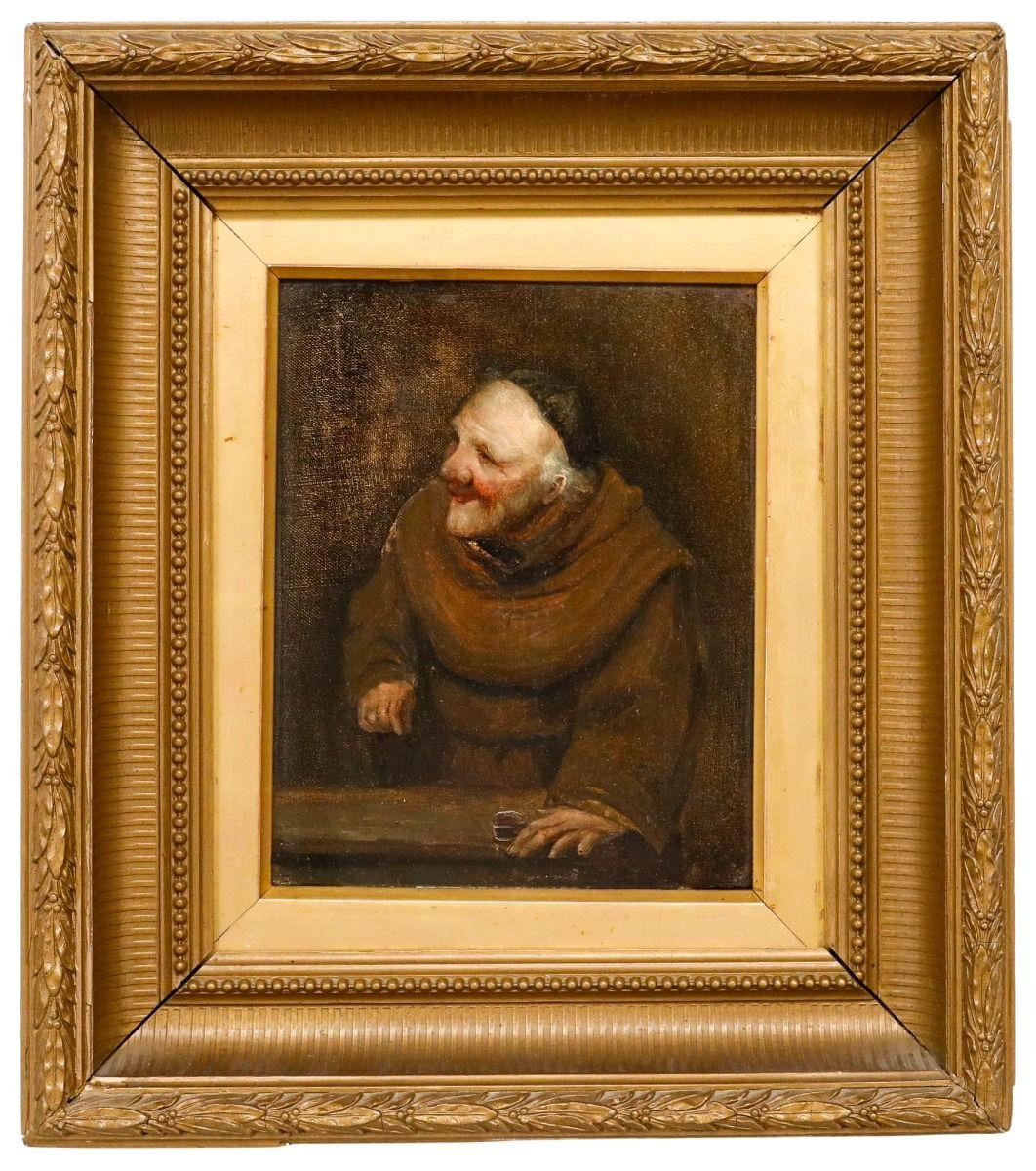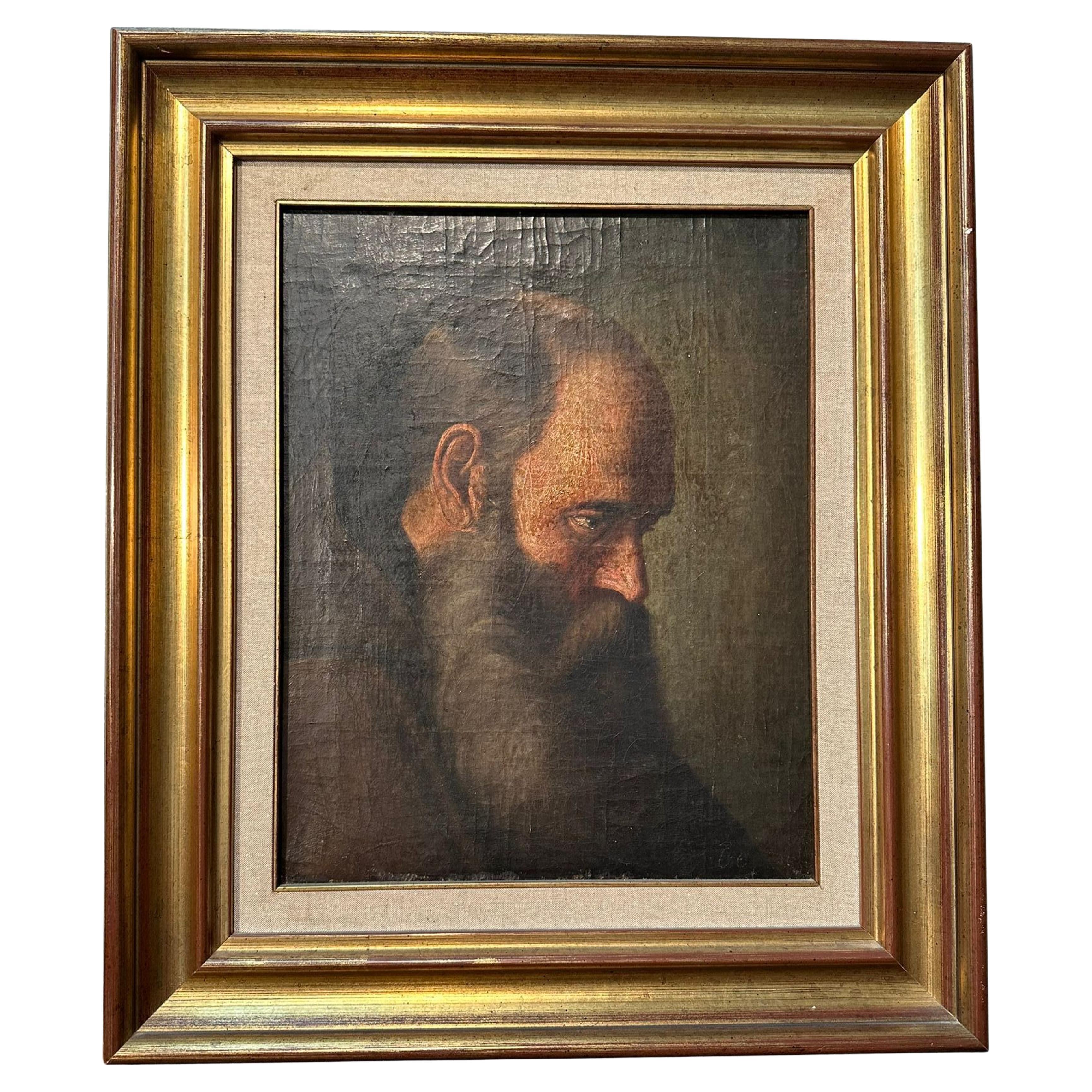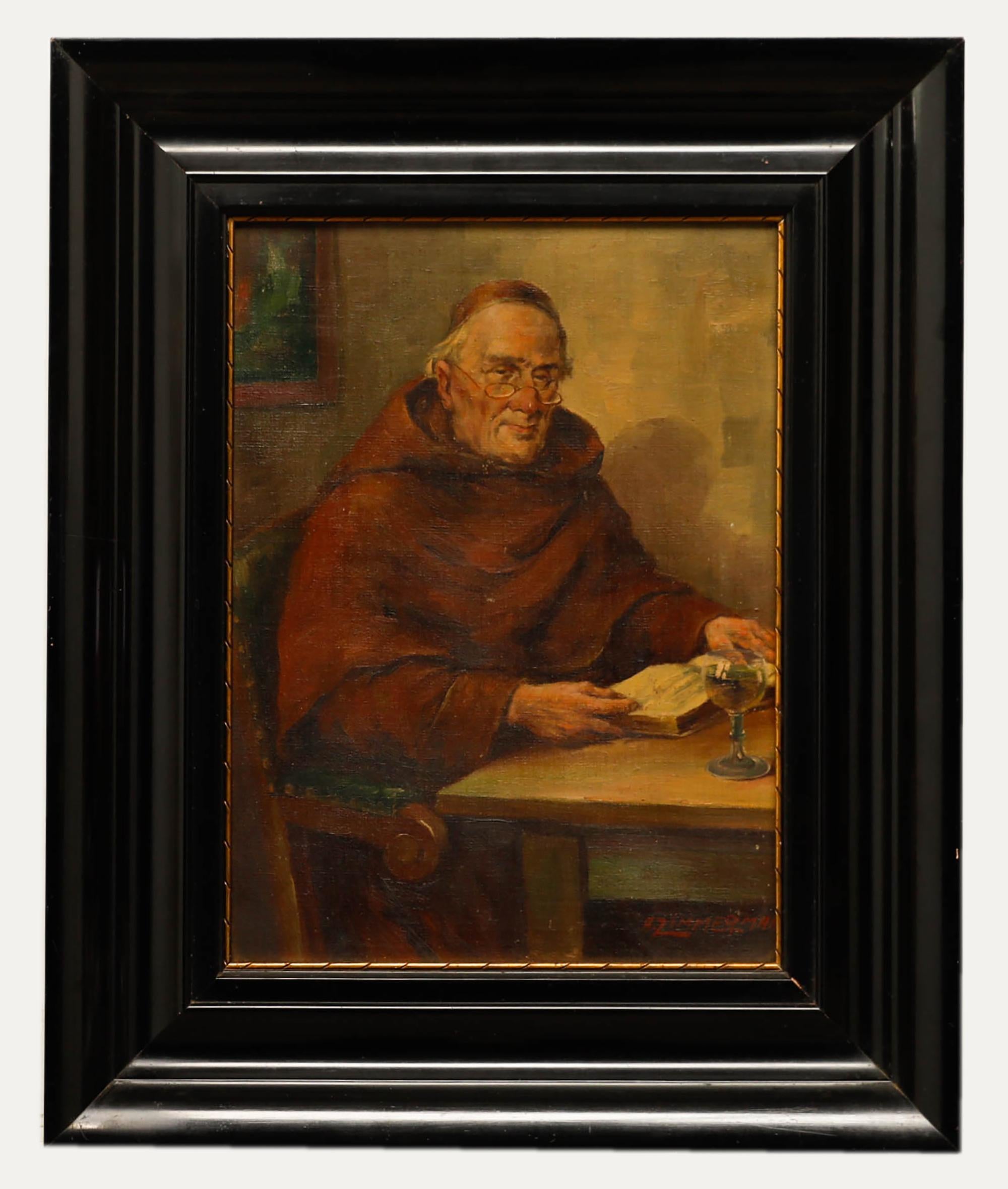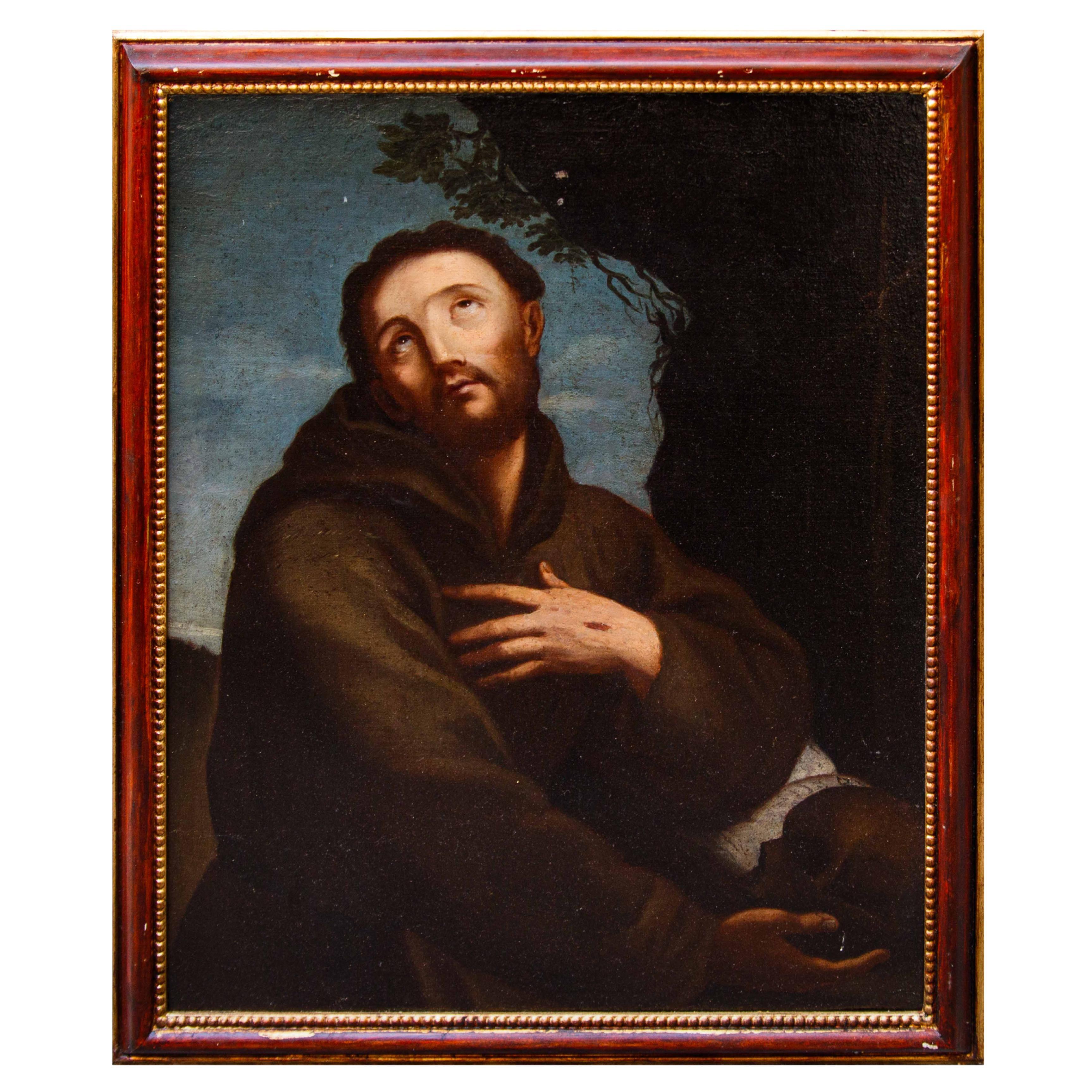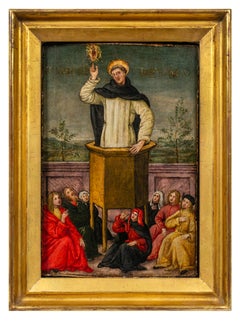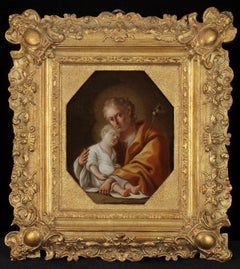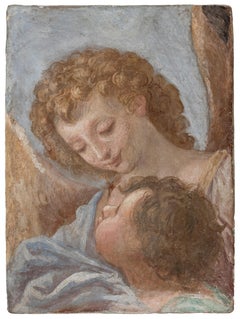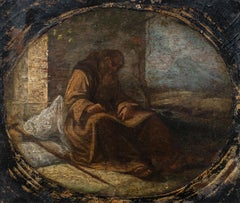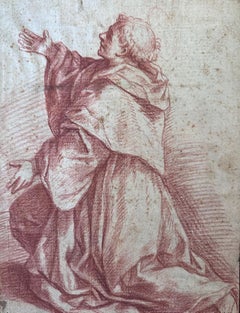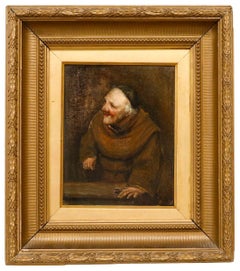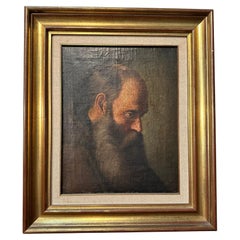Items Similar to Study of a Franciscan Saint, probably San Diego de Alcalá
Want more images or videos?
Request additional images or videos from the seller
1 of 2
Vicente CarduchoStudy of a Franciscan Saint, probably San Diego de Alcalác. 1609
c. 1609
$9,500
£7,147.87
€8,258.05
CA$13,425.98
A$14,578
CHF 7,720.12
MX$178,684.57
NOK 95,539.52
SEK 90,279.79
DKK 61,634.70
About the Item
Provenance: Ivan E. Phillips, Montreal and New York, until 2023.
The brothers Bartolomé Carducho and Vicente Carducho, both born and trained in Florence, settled in Spain where they made their careers. Vicente worked on numerous commissions for both the church and the Spanish court in Castile. Vicente was appointed to the position of Pintor del Rey—painter to the king—in 1609, although he also worked on religious commissions during this time.
Carducho was a talented draughtsman, and his drawings are rare on the art market. Ours is inscribed in the upper right “2Rl” in a hand and following a formula (with a number followed by Rl or Rs) commonly found on Carducho’s works. The drawing depicts a tonsured Franciscan with knotted chord contemplating a crucifix. It may represent San Diego de Alcalá, who Carducho depicted in an altarpiece for in the church of San Diego in Valladolid (Fig. 1).
- Creator:Vicente Carducho (1576 - 1638, Spanish, Italian)
- Creation Year:c. 1609
- Dimensions:Height: 8 in (20.32 cm)Width: 4 in (10.16 cm)
- Medium:
- Movement & Style:
- Period:
- Condition:
- Gallery Location:New York, NY
- Reference Number:1stDibs: LU10211806742
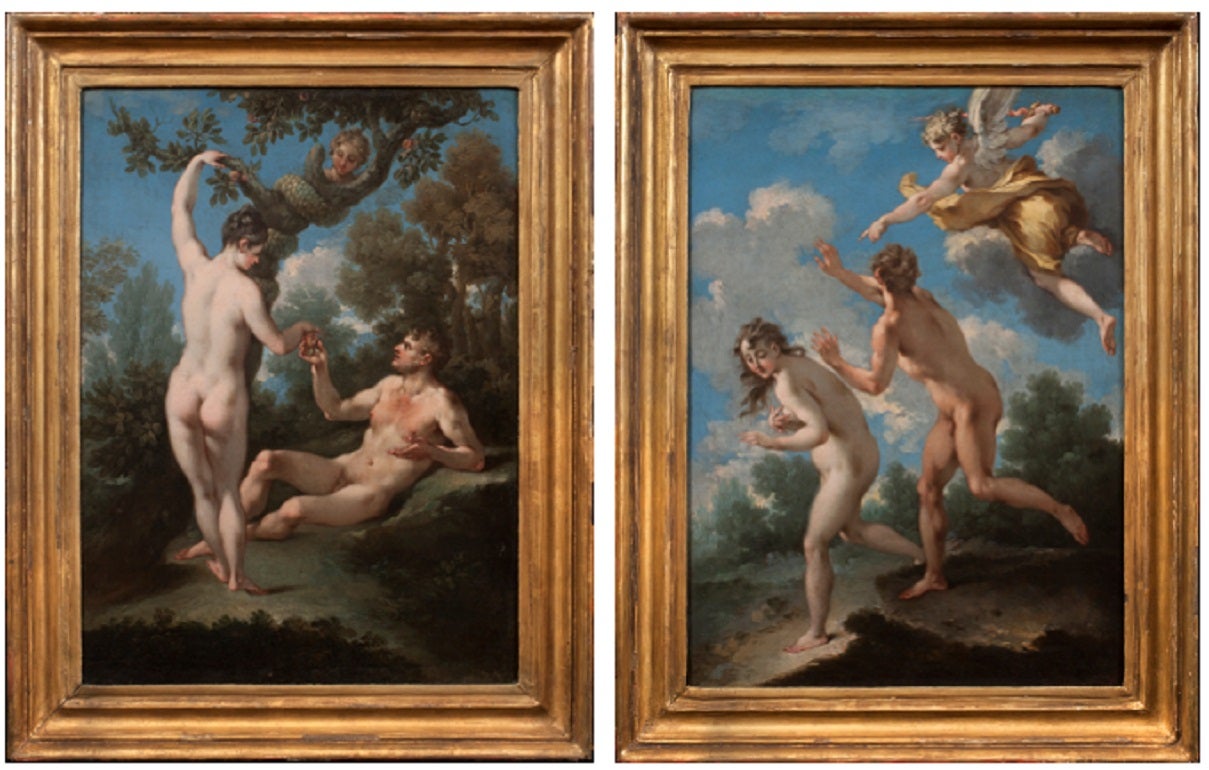
About the Seller
5.0
Recognized Seller
These prestigious sellers are industry leaders and represent the highest echelon for item quality and design.
Established in 1997
1stDibs seller since 2012
22 sales on 1stDibs
Typical response time: 20 hours
- ShippingRetrieving quote...Shipping from: New York, NY
- Return Policy
Authenticity Guarantee
In the unlikely event there’s an issue with an item’s authenticity, contact us within 1 year for a full refund. DetailsMoney-Back Guarantee
If your item is not as described, is damaged in transit, or does not arrive, contact us within 7 days for a full refund. Details24-Hour Cancellation
You have a 24-hour grace period in which to reconsider your purchase, with no questions asked.Vetted Professional Sellers
Our world-class sellers must adhere to strict standards for service and quality, maintaining the integrity of our listings.Price-Match Guarantee
If you find that a seller listed the same item for a lower price elsewhere, we’ll match it.Trusted Global Delivery
Our best-in-class carrier network provides specialized shipping options worldwide, including custom delivery.More From This Seller
View AllSt. Vincent Ferrer Preaching to the People of Salamanca
Located in New York, NY
Provenance:
Private Collection, New Jersey
The present painting depicts Saint Vincent Ferrer preaching from a raised pulpit to a group of seven peopl...
Category
15th Century and Earlier Renaissance Figurative Paintings
Materials
Oil, Wood Panel
Head of a Classical Poet (Socrates?)
By Pier Francesco Mola
Located in New York, NY
Provenance:
Possibly Antonio Amici Moretti, Rome, 1690
Roy Clyde Gardner, Union, Mississippi, 1970s until 2004; by whom given to:
Mississippi Band of Choctaw Indians, 2004-2010
Lit...
Category
17th Century Baroque Paintings
Materials
Canvas, Oil
Joseph Holding the Christ Child
By Pietro Bardellino
Located in New York, NY
Provenance: Private Collection, Argentina.
A work of great delicacy and intimacy, this small painting on copper by Pietro Bardellino treats a subject which grew in popularity during the Baroque period: Saint Joseph and the Christ child...
Category
18th Century Baroque Paintings
Materials
Copper
A Guardian Angel and a Child
Located in New York, NY
Provenance:
Cornelius Vanderbilt, New York; by whom gifted in 1880 to:
The Metropolitan Museum of Art, New York (80.3.673); deaccessioned and sold:
Christie’s, New York, 12 June 19...
Category
17th Century Old Masters Portrait Paintings
Materials
Terracotta, Gesso
Portrait of an Artist (possibly a Self-Portrait)
Located in New York, NY
Provenance:
Bradley Collection.
Private Collection, Upperville, Virginia.
Literature:
Katlijne van der Stighelen and Hans Vlieghe, Rubens: Portraits of Unidentified and Newly Identified Sitters painted in Antwerp, Corpus Rubenianum Ludwig Burchard, vol. 19, pt. 3, London and Turnhout, 2021, under cat. no. 189, p. 161, and fig. 75.
This painting had previously been considered to be by an anonymous Tuscan painter of the sixteenth century in the orbit of Agnolo Bronzino. While the painting does in fact demonstrate a striking formal and compositional similarity to Bronzino’s portraits—compare the nearly identical pose of Bronzino’s Portrait of a Young Man in the Metropolitan Museum of Art (Fig. 1)—its style is completely foreign to Italian works of the period. That it is painted on an oak panel is further indication of its non-Italian origin.
This portrait can in fact be confidently attributed to the Antwerp artist Huybrecht Beuckelaer. Huybrecht, the brother of Joachim Beuckelaer, has only recently been identified as the author of a distinct body of work formerly grouped under the name of the “Monogrammist HB.” In recent studies by Kreidl, Wolters, and Bruyn his remarkable career has been delineated: from its beginnings with Joachim in the workshop of Pieter Aertsen; to his evident travels to Italy where, it has been suggested, he came into contact with Bronzino’s paintings; to his return to Antwerp, where he seems to have assisted Anthonis Mor in painting costume in portraits; to his independent work in Antwerp (where he entered the Guild of Saint Luke in 1579); and, later to his career in England where, known as “Master Hubberd,” he was patronized by the Earl of Leicester. Our painting was recently published by Dr. Katlijne van der Stighelen and Dr. Hans Vlieghe in a volume of the Corpus Rubenianum, in which they write that the painting “has a very Italian air about it and fits convincingly within [Beuckelaer’s] oeuvre.” Stighelen and Vlieghe compare the painting with Peter Paul Ruben’s early Portrait of a Man, Possibly an Architect or Geographer in the Metropolitan Museum of Art, in which the sitter holds a compass and wears a similarly styled doublet (Fig. 2).
Huybrecht both outlived and travelled further afield than his brother Joachim, who made his career primarily in Antwerp. Whereas Joachim was the main artistic inheritor of their uncle and teacher, Pieter Aertson, working in similar style and format as a specialist in large-scale genre and still-life paintings, Huybrecht clearly specialized as a painter of portraits and was greatly influenced by the foreign artists and works he encountered on his travels. His peripatetic life and his distinctly individual hand undoubtedly contributed to the fact his career and artistic output have only recently been rediscovered and reconstructed. His periods abroad seem to have overlapped with the mature phase of his brother Joachim’s career, who enrolled in the Antwerp Guild of Saint Luke much earlier than his brother, establishing himself as an independent painter in 1560. Joachim’s activity was confined to the following decade and half, and his latest work dates from the last year of his life, 1574. Our portrait was likely produced in the late 1560s, a dating supported by the dendrochronological investigation performed by Dr. Peter Klein, which established that it is painted on an oak panel with an earliest felling date of 1558 and with a fabrication date of ca. 1566.
This painting presents a portrait of an artist, almost certainly Huybrecht’s self-portrait. The young sitter is confidently posed in a striking patterned white doublet with a wide collar and an abundance of buttons. He stands with his right arm akimbo, his exaggerated hands both a trademark of Huybrecht and his brother Joachim’s art, as well as a possible reference to the “hand of the artist.” The figure peers out of the painting, interacting intimately and directly with the viewer, as we witness him posed in an interior, the tools and results of his craft visible nearby. He holds a square or ruler in his left hand, while a drawing compass...
Category
16th Century Old Masters Paintings
Materials
Oil, Panel
The Assumption of the Virgin
Located in New York, NY
Provenance:
Unidentified collector’s mark “D.G.R,” lower right (Lugt 757b)
Wilhelm Suida (1877–1959), New York; by descent to:
Robert L. and Bertina Suida Manning, New York, until 1996
Private Collection, USA
This impressive drawing of the Assumption of the Virgin is the work of the Genoese artist Giovanni Battista Paggi. The son of a nobleman, Paggi received a humanist education and was a self-taught artist. According to Paggi’s first biographer, Raffaele Soprani, it was only after encountering Luca...
Category
16th Century Old Masters Figurative Drawings and Watercolors
Materials
Paper, Ink, Pen
You May Also Like
Baroque Italian painter - 17T18th century figure painting - Franciscan friar in
Located in Varmo, IT
Italian painter (17th-18th century) - Franciscan pilgrim friar sitting and writing (preparatory sketch).
14 x 16.5 cm.
Antique oil painting on panel, without frame (not signed).
C...
Category
Late 17th Century Baroque Figurative Paintings
Materials
Oil, Panel
Italian School, 17th century - Study for the Vision of Saint Anthony
Located in Paris, Île-de-France
Italian School, 17th century
Study for the Vision of Saint Anthony
Red chalk on paper
247 x 185 mm
Unsigned
Provenance
Private collection, Paris
Collection of Count Alessandro Mag...
Category
17th Century Old Masters Figurative Drawings and Watercolors
Materials
Chalk
19th Century Oil - Portrait of a Monk
Located in Corsham, GB
This intimate portrait depicts a jovial monk in brown robes, captured in a moment of warm laughter or contentment against a rich, dark background. The artist employs loose, expressiv...
Category
19th Century Portrait Paintings
Materials
Oil
ITALIAN SCHOOL 17TH CENTURY "Saint"
Located in Madrid, ES
ITALIAN SCHOOL 17TH CENTURY "Saint"
Oil on canvas Numbered 60 in the lower right corner.
Some interventions.
Measurements: 47 x 37 cm
good condition
Category
Antique 17th Century Italian Baroque Paintings
Materials
Paint
A. Zimmerman - 19th Century Oil, The Monk
Located in Corsham, GB
Signed to the lower right. Presented in a black lacquer frame. On canvas.
Category
19th Century Portrait Paintings
Materials
Oil
$437 Sale Price
20% Off
Emilian school, 17th century, St. Francis
Located in Milan, IT
Scuola emiliana, XVII secolo
St. Francis
Oil on canvas, 73 x 59 cm
Framed, 83 x 69 cm
Patron saint of Italy, St. Francis (Giovanni di Pietro di Bernardone; Assisi, 1181/1182 - 1...
Category
Antique 18th Century and Earlier Italian Other Paintings
Materials
Canvas
More Ways To Browse
17th Century Saint Paintings
Spanish Church
17th Ink Drawings
Figure Drawings
Framed Watercolor Landscape
American Watercolours
Vintage Pastel Art
19th Century Watercolour
Watercolor Paintings Of A Flower
Nude Watercolour Paintings
French Watercolour Painting
White Watercolor Painting
Watercolor Still Life
Watercolour Paintings France
British Watercolour
Study Drawing
Antique Landscape Watercolor
French Vintage Watercolors
